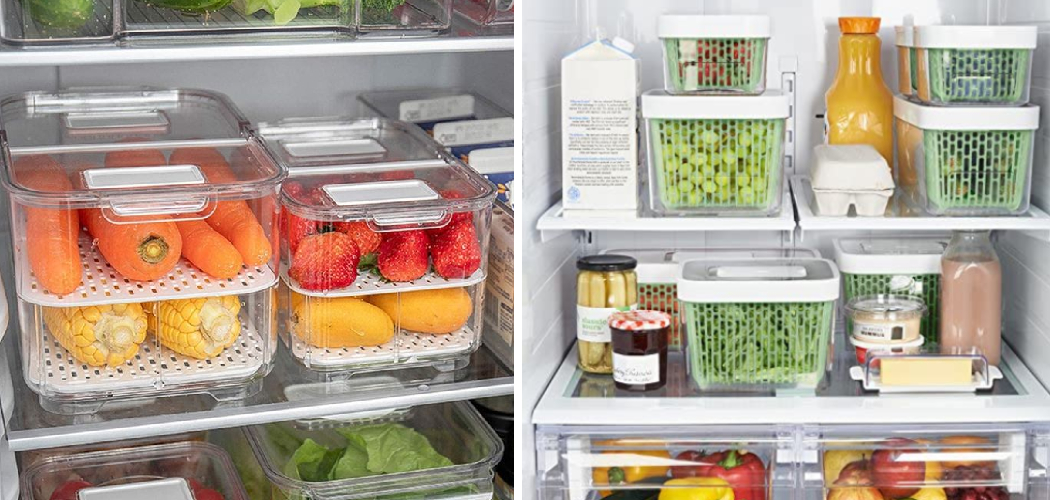Storing leftovers and other items in containers can be a great way to keep things organized, save room and prevent excess waste. But if you’re not careful about minimizing moisture buildup within the container, your items could become moldy or stale long before their expiration date.
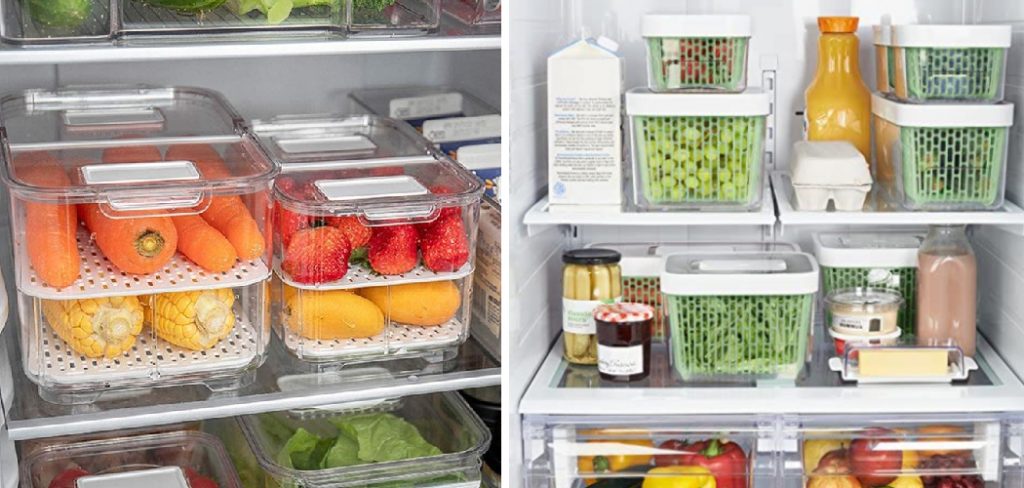
With just a few simple steps, however, you can tremendously reduce the risk of moisture accumulating in storage containers and extend the shelf life of whatever it is that you’re trying to protect from the elements. In this blog post, we’ll discuss how to keep moisture out of storage containers so that your food stays fresh for longer!
11 Step-by-step Guidelines on How to Keep Moisture Out of Storage Containers
Step 1: Choose the Right Container
Choose a container that is airtight, waterproof, and non-porous. Plastic or glass containers are ideal for keeping moisture out and will last much longer than other materials. It is also important to choose a container that is the right size for the items you’re storing. The less air space there is in the container, the better. This will help to reduce the amount of moisture that can get in. This is especially important for refrigerated items. It is important to make sure the lid fits tightly, and also consider getting containers with a built-in seal.
Step 2: Use a Moisture Absorber
Place a moisture absorber in the container along with whatever it is that you’re storing. This will help to absorb any excess moisture before it has a chance to affect your stored items. But be sure to replace them regularly, as they won’t last forever. It is also important to choose a moisture absorber that is designed for the type of container you are using. If you’re using a plastic container, make sure to get a moisture absorber specifically designed for plastics.
Step 3: Place Containers in Cool, Dry Places
To further reduce the risk of moisture buildup, store containers in cool, dry places such as cupboards or pantries. Do not store them directly on the ground or near heat sources as this could cause condensation to form inside the container. But if you must store them in an area that tends to be humid, consider using a dehumidifier or air conditioner. It is also important to avoid storing containers near water sources, such as the sink or dishwasher. If possible, it’s best to store them off the floor. But if you must, make sure to place a tray or mat underneath the containers in order to prevent them from sitting directly on wet surfaces.
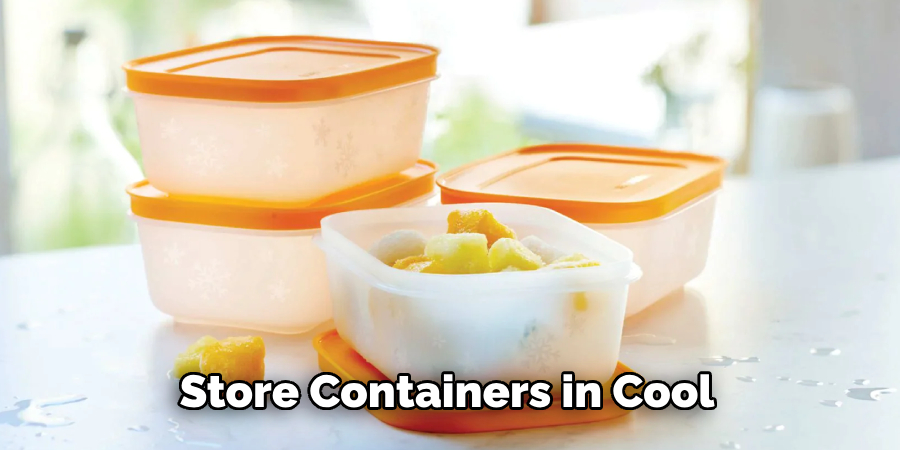
Step 4: Leave Room for Air Circulation
When packing containers with food items, be sure to leave some room at the top to allow for air circulation and prevent condensation from forming. This will also help to reduce the risk of moisture buildup. But if you are packing items tightly, consider using a moisture absorber to absorb any excess moisture before it has a chance to affect the stored items. It is also important to label the containers with the contents and date so you know when it was packed and can unpack items in the proper order. This will help to reduce the risk of spoilage.
Step 5: Use Plastic Wrap or Aluminum Foil
Place a layer of plastic wrap or aluminum foil over the container lid before closing it to help keep moisture away. But be sure to remove it before putting the container in the refrigerator or freezer. This will help to keep the food fresher for longer. It is also important to always use a clean piece of plastic wrap or aluminum foil for each container, as this will help to reduce the risk of contamination. This is especially important when storing food items. It is also important to label the container with the contents and date.
Step 6: Keep Lids Tightly Sealed
If you’re using containers with lids, be sure to keep them tightly sealed after each use to ensure that no moisture can enter the container. This includes making sure that any clips or other fasteners are securely closed. Always double-check the seals before storing the containers to ensure that they are secure. Otherwise, moisture could still get in.
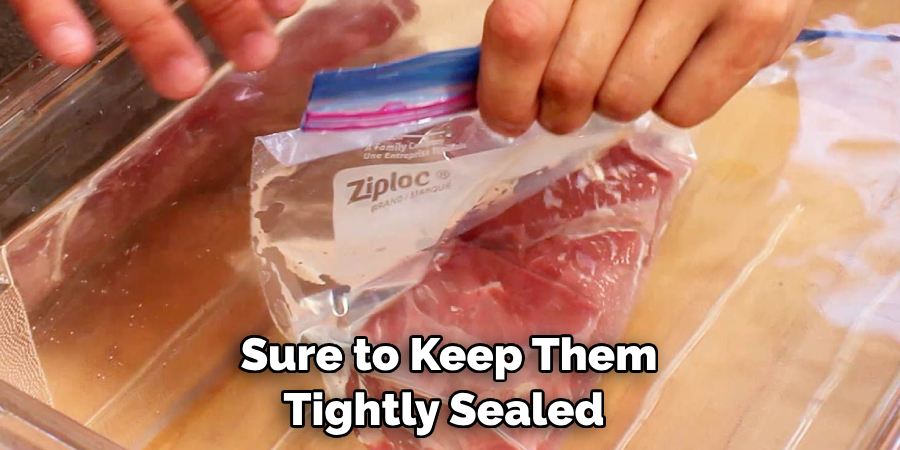
Step 7: Freeze Perishable Items
When storing perishable items such as leftovers, consider freezing them instead of refrigerating them. This will reduce the risk of spoilage due to moisture buildup. It is also important to label the containers with the contents and date so you know when it was frozen and can unpack items in the proper order. This will help to reduce the risk of spoilage. Do not store the containers in the refrigerator or freezer for more than two weeks, as this could cause food poisoning.
Step 8: Place Items in Zip-Top Bags
If you’re storing items in containers that don’t come with lids, consider placing them in a zip-top bag before adding them to the container. This will help keep moisture out and can make it easier to access specific items within the container. But be sure to label the zip-top bag with the contents and date so you know when it was packed and can unpack items in the proper order. This will help to reduce the risk of spoilage.
Step 9: Wrap Items Separately
For best results, wrap each item separately in plastic or aluminum foil before adding it to the container. This will help prevent items from sticking together and reduce the risk of spoilage due to moisture buildup. It is also important to label the container with the contents and date so you know when it was packed and can unpack items in the proper order. This will help to reduce the risk of spoilage. But be sure to unwrap items before refrigerating or freezing them.
Step 10: Regularly Check Containers
It’s also important to regularly check your containers for any signs of moisture buildup such as condensation or mold growth. If you find any moisture, take the necessary steps to remedy the problem before it has a chance to affect your stored items. But if you are unable to remedy the problem, consider discarding the items and replacing them with new ones. This will help to reduce the risk of spoilage.
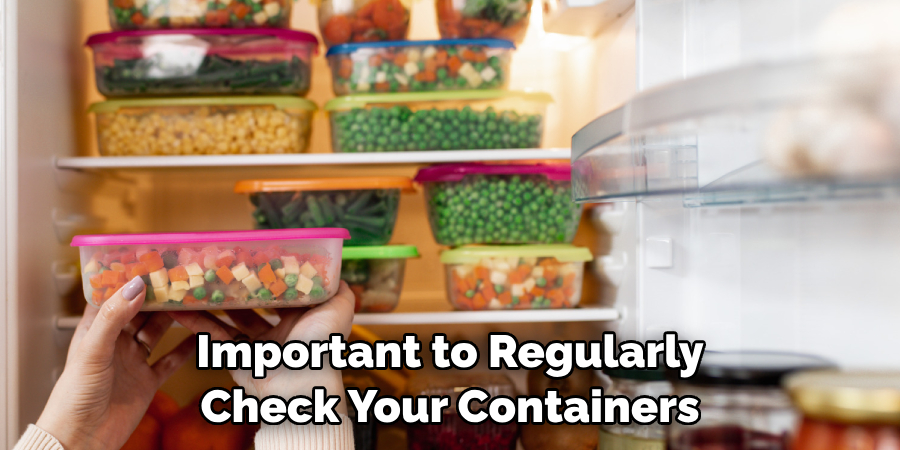
Step 11: Consider Breathable Containers
If you’re storing items that need to breathe, such as bread and pastries, consider using containers made with breathable materials such as cotton or linen bags. This will allow air to circulate while still keeping out moisture.
Always be sure to label the bags with the contents and date so you know when it was packed and can unpack items in the proper order. This will help to reduce the risk of spoilage. But be sure to keep these items out of direct sunlight, as this could cause them to spoil.
By following these simple steps on how to keep moisture out of storage containers, you can help ensure that your food stays fresh longer and reduce the risk of spoilage due to moisture buildup in storage containers. Do you have any tips for keeping moisture out of storage containers? Let us know in the comments below!
Frequently Asked Questions
Q: Is It Better to Freeze or Refrigerate Food Items?
A: It depends on the type of item you’re storing. Generally speaking, freezing is best for items that will be stored for longer periods of time or for those that can’t be refrigerated. Refrigerating is better for short-term storage and items that need to remain at a certain temperature.
Q: How Often Should I Check My Containers?
A: It’s best to check your containers for moisture buildup at least once a month, or more frequently if necessary. You should also inspect containers after they’ve been opened, as this is when moisture is most likely to enter the container.
Q: What Are Some Good Moisture Absorbers?
A: Silica gel packets are a great option for absorbing excess moisture. You can also use charcoal briquettes or kitty litter as alternatives. Be sure to replace these items regularly to ensure optimal performance.

Conclusion
To keep moisture out of storage containers, we can use several different techniques. It is important that whatever method chosen works well for the structure and size of our items. For homes with high humidity levels, using a dehumidifier may prove to be an effective tool for controlling moisture levels in storage containers and keeping them off the property.
Partnering this with the use of breathable materials like mesh and lined cardboard is also a great way to create even more protection against moisture will give further peace of mind while storing items away.
Keeping moisture out of our storage boxes is essential for preserving items inside, by adding as many preventative measures in place as possible, your belongings will remain safe from any water damage or risk of mold or bacteria growth. With these tips in mind on how to keep moisture out of storage containers, you’ll be able to store your treasures away while keeping the safety and security of all your stored goods intact!
